Seminars
TODAY
Counting points of elliptic curves over finite fields
Abstract: This is an expository talk about counting points of elliptic curves $$E: y^2=f(x),\ \ f=4x^3-t_2x-t_3, \ \ t_2,t_3\in{\mathbb F}_p.$$ Instead of brute force substitution of elements of a finite field in the equation of elliptic curve, I will explain how computation of the Hasse-Witt invariant of elliptic curves do this counting job! A variant of this method (due to N. Katz and B. Mazur) uses vector fields on elliptic curves. This will be reduced to compute the following recurion of polynomials in $x$ $$V_{2n+2}=fV_{2n}''+\frac{1}{2}f'V_{2n}',\ \ V_0=x, \ '=\frac{\partial}{\partial x}.$$ For a prime $p\not=2$, it turns out that $V_{p-1}$ modulo $p$ is a degree one polynomial in $x$ and $p+1-\#E( {\mathbb F}_p)$ modulo $p$ is the coefficient of $x$ in $V_{p-1}$.
UPCOMING
Automorphisms of quartic surfaces and Cremona transformations
Abstract: In this talk, I will discuss the following question, attributed to Gizatullin: "Which automorphisms of a smooth quartic surface in projective 3-space are restrictions of Cremona transformations of the ambient space?'' I will present a general framework that can be used to study this problem, namely a birational theory for Calabi-Yau pairs, and report on recent progress obtained in collaboration with A. Corti and A. Massarenti and with D. Paiva and S. Zikas.
Investigations of SL(4)-structures.
Abstract: The studies of convex-cocompact $SO(3,1),SO(2,2),$ and $SO(2,1)\times{\Bbb R}^{2,1}$ structures are the Lie-theoretic analogues of the studies of de Sitter, anti de Sitter, and Minkowski spacetimes respectively. The analytic treatments of these three theories are almost identical, suggesting a unified treatment involving Anosov SL(4)-structures. The main challenge in constructing such a unification is the absence of any invariant metric. It is thus necessary to enquire what structures may take their place. The purpose of this talk is to present some preliminary investigations into the theory of SL(4) structures aimed at resolving this problem.


